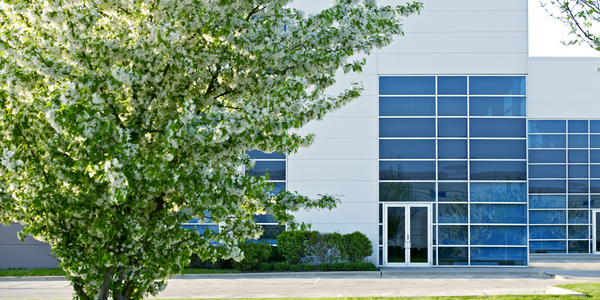Technology Category
- Platform as a Service (PaaS) - Application Development Platforms
- Sensors - Camera / Video Systems
Applicable Industries
- Cement
Applicable Functions
- Product Research & Development
About The Customer
Wacht is a music video discovery platform that combines the functionality of Reddit with the nostalgia of MTV. It was created by Joel Loyol, a UX/Product designer with a background in launching products. Loyol had been toying with the idea of Wacht for about two years before he discovered Bubble. Despite having no coding knowledge, Loyol was able to use Bubble's no-code tools to bring his vision to life. Wacht is designed for music enthusiasts who miss the experience of discovering new music through MTV and want a dedicated space for finding and listening to music videos.
The Challenge
Joel Loyol, the founder of Wacht, identified a gap in the market for a dedicated platform for discovering music videos. He wanted to recreate the experience of watching music videos on MTV, a platform that was once a go-to for music enthusiasts. The challenge was to create a user-friendly platform that would allow users to submit, tag, and recommend music videos, similar to the functionality of Reddit and Product Hunt. However, Loyol had no prior coding knowledge, which posed a significant barrier to developing such a platform.
The Solution
Loyol turned to Bubble, a leader in the no-code movement, to build Wacht. Bubble's point-and-click web editor and cloud hosting platform allowed Loyol to create a fully customizable web application without any coding knowledge. The platform works by allowing users to submit music videos, tag them by genre and format, and then recommend the best content. The most recommended videos rise to the top of the site, making it easy for users to discover new music. Bubble's intuitive design software made it easy for Loyol to iterate quickly, allowing him to make significant changes to the site in a short period.
Operational Impact

Case Study missing?
Start adding your own!
Register with your work email and create a new case study profile for your business.
Related Case Studies.

Case Study
System 800xA at Indian Cement Plants
Chettinad Cement recognized that further efficiencies could be achieved in its cement manufacturing process. It looked to investing in comprehensive operational and control technologies to manage and derive productivity and energy efficiency gains from the assets on Line 2, their second plant in India.

Case Study
Digital Transformation of Atlanta Grout & Tile: An IoT Case Study
Atlanta Grout & Tile, a Tile, Stone & Grout restoration company based in Woodstock, Georgia, was facing challenges with its traditional business model. Despite steady growth over the years, the company was falling behind the web revolution and missing out on the opportunity to tap into a new consumer base. They were using independent software from different vendors for each of their department information and workforce management. This resulted in a lot of manual work on excel and the need to export/import data between different systems. This not only increased overhead costs but also slowed down their response to clients. The company also had to prepare numerous reports manually and lacked access to customer trends for effective business decision-making.

Case Study
Revolutionizing Construction Equipment Rental: A Case Study on ProsRent and ENO8
ProsRent, a startup that won the 'Best Financial Opportunity' and 'Best Pitch' at CodeLaunch 2016, aimed to revolutionize the way construction professionals source and rent heavy equipment. In the construction industry, project managers and contractors typically rent heavy equipment from supply companies. However, predicting inventory can be challenging, and finding the required equipment at the right time and place can be a hassle. If the preferred vendor doesn't have the required equipment, it results in wasted time and money in searching for it, often leading to higher costs due to non-preferred rates and increased delivery costs if the vendor is located far from the job site. Suppliers, on the other hand, desired access to a wider base of trusted renters that they didn't have to vet themselves and wanted to offer dynamic rental pricing based on demand and availability in their market. ProsRent's challenge was to produce a minimum viable product that was fast and first to market but also strong enough to engender loyalty and repeat business from the target market.

Case Study
AI-based Automation for Commercial Office HVAC: A Verdigris Case Study
Modern buildings are required to run longer hours, support a variety of end uses, and contribute to higher levels of economic productivity, leaving a thin margin for error. However, even the most advanced building and environmental control systems have failed to adequately support facilities and operations management. Buildings are often inefficient and the people using them are underserved. To meet occupant comfort and maintain cost and energy efficiency, a dynamic, AI-assisted approach is needed.

Case Study
Revamping EE's Legacy ERP: A Case Study on BT's Strategic Transformation
EE, even after its merger with BT, was operating its ERP estate on legacy infrastructure, hosted on the premises of a third-party supplier. This outdated system resulted in a volume-based operational model, higher time to market, longer delivery cycles, and unsatisfactory customer experience. BT recognized the need for a strategic transformation of these aging ERP systems and sought a partner who could proactively manage application services. The partner was also expected to handle development requirements associated with application management services, drive accountability, and ownership with a time and target-driven transformation of these services. BT's primary goals were to improve customer experience, reduce cycle time, and measure these improvements with precision.








